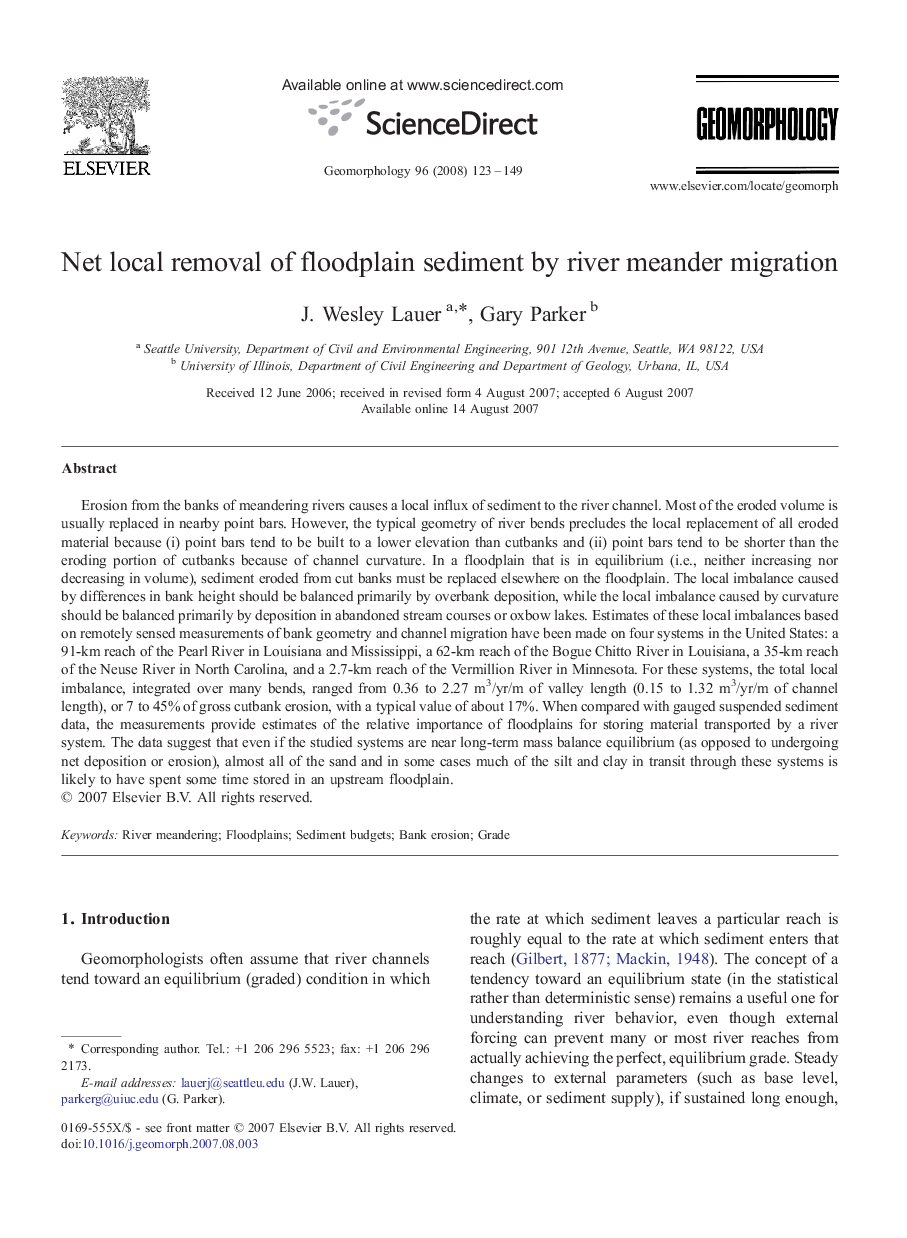| Article ID | Journal | Published Year | Pages | File Type |
|---|---|---|---|---|
| 4686765 | Geomorphology | 2008 | 27 Pages |
Erosion from the banks of meandering rivers causes a local influx of sediment to the river channel. Most of the eroded volume is usually replaced in nearby point bars. However, the typical geometry of river bends precludes the local replacement of all eroded material because (i) point bars tend to be built to a lower elevation than cutbanks and (ii) point bars tend to be shorter than the eroding portion of cutbanks because of channel curvature. In a floodplain that is in equilibrium (i.e., neither increasing nor decreasing in volume), sediment eroded from cut banks must be replaced elsewhere on the floodplain. The local imbalance caused by differences in bank height should be balanced primarily by overbank deposition, while the local imbalance caused by curvature should be balanced primarily by deposition in abandoned stream courses or oxbow lakes. Estimates of these local imbalances based on remotely sensed measurements of bank geometry and channel migration have been made on four systems in the United States: a 91-km reach of the Pearl River in Louisiana and Mississippi, a 62-km reach of the Bogue Chitto River in Louisiana, a 35-km reach of the Neuse River in North Carolina, and a 2.7-km reach of the Vermillion River in Minnesota. For these systems, the total local imbalance, integrated over many bends, ranged from 0.36 to 2.27 m3/yr/m of valley length (0.15 to 1.32 m3/yr/m of channel length), or 7 to 45% of gross cutbank erosion, with a typical value of about 17%. When compared with gauged suspended sediment data, the measurements provide estimates of the relative importance of floodplains for storing material transported by a river system. The data suggest that even if the studied systems are near long-term mass balance equilibrium (as opposed to undergoing net deposition or erosion), almost all of the sand and in some cases much of the silt and clay in transit through these systems is likely to have spent some time stored in an upstream floodplain.
